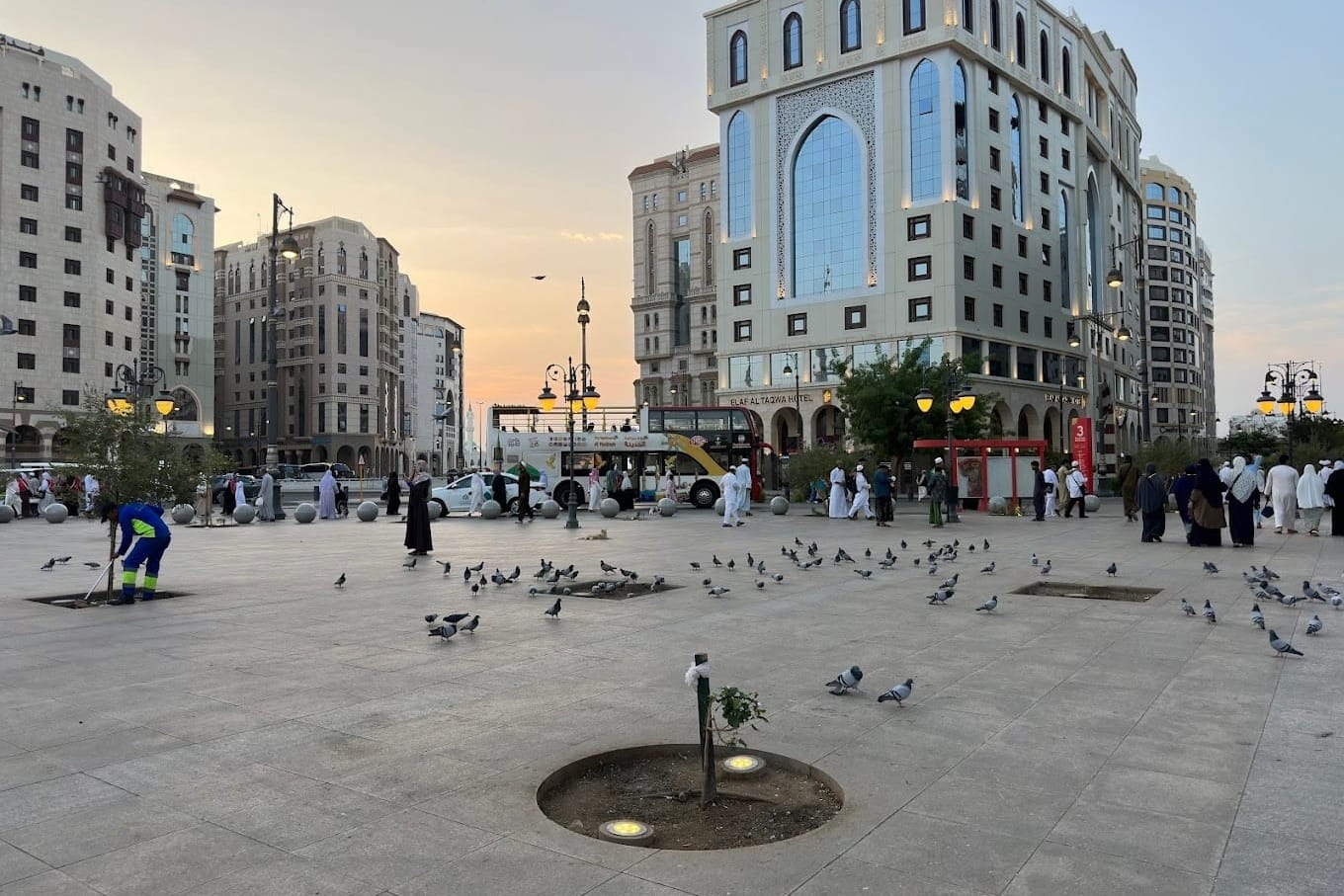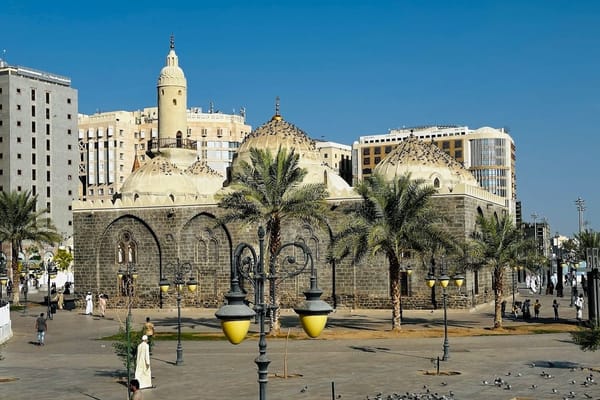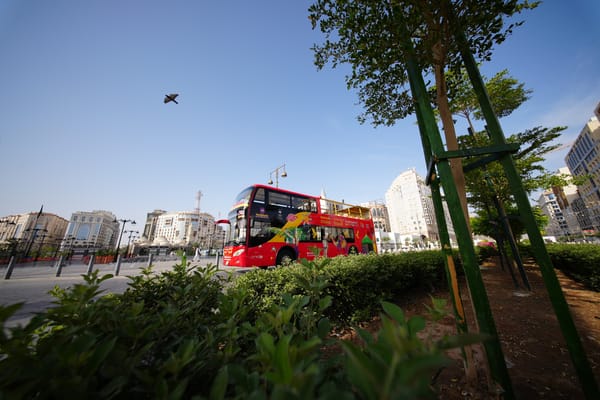Al Manakha, also known as Manakha Square or Musalla Square, sits at the spiritual and cultural core of Madinah. Located just southwest of the Prophet's Mosque (Al-Masjid an-Nabawi), this historic open space has been a vital center for trade, worship, and community for centuries.
Though modern development continues to shape the cityscape, Al Manakha remains a must-visit site for pilgrims and cultural explorers. And with the Hop-On Hop-Off Bus, it’s easier than ever to include it in your itinerary.
A Historic Marketplace and the Prophet's Musalla
During the time of Prophet Muhammad (ﷺ), Al Manakha was both a camel resting area and a bustling market. It was here that the Prophet established a just and tax-free commercial zone, ensuring fairness for all traders. Over time, this area also became known as Musalla al-Nabi, the open area west of Al-Masjid an-Nabawi where the Prophet performed significant prayers including Eid prayers (Eid al-Adha and Eid al-Fitr), rain prayers, and even funeral prayers for the Negus of Abyssinia.
Historical sources record multiple prayer spots within Al-Manakha, such as near Dar Al-Shifa, Al-Daws district, and the residences of early Muslims like Hakim bin Adi and Kathir bin Al-Salt. These sites were commemorated centuries later with the construction of mosques.
Sacred Memory Preserved at Al Manakha
The mosques in Al-Manakha, closely associated with the Prophet Muhammad (ﷺ), were not constructed during his lifetime or that of the Rightly Guided Caliphs. Instead, they were first built during the governorship of Umar ibn Abd al-Aziz, when Madinah saw increased efforts to preserve its Islamic heritage. During his administration, many of the Prophet’s historically known prayer sites in Al-Manakha were formally commemorated by converting them into mosques.
Among the earliest mosques built in the area were:
- Masjid al-Ghamama
- Masjid Ali ibn Abi Talib
- Masjid Abu Bakr
In subsequent centuries, more mosques were added:
- Masjid Umar ibn al-Khattab in the 9th century AH
- Masjid Uthman in the 15th century AH
Some scholars also include Masjid al-Qashla and Masjid Bilal as part of this sacred network, due to their association with prayer sites from the Prophet’s era. These mosques are situated in what was historically the open area of Al-Manakha, where the Prophet conducted key communal prayers. Today, they stand as enduring spiritual landmarks that preserve and honor Madinah’s early Islamic identity.
For a complete Ziyarat route and more must-visit mosques in Madinah, check out this helpful guide: 13 Must-Visit Madinah Mosques.
Mosques of Al-Manakha:
Masjid al-Ghamama (Mosque of the Cloud)
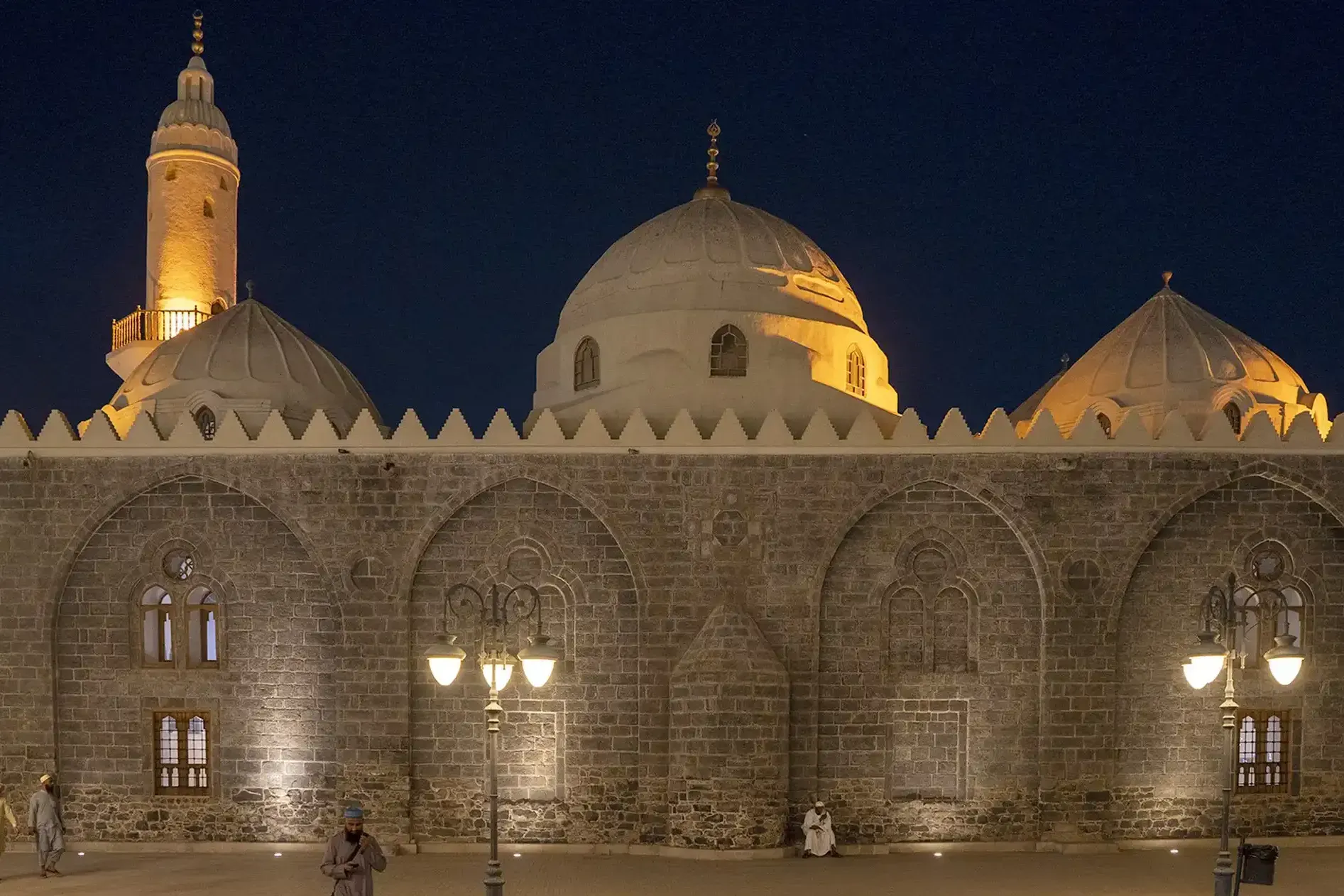
Masjid al-Ghamama stands on the spot where the Prophet Muhammad (ﷺ) performed Eid and rain prayers. The name "Ghamama," meaning "cloud," refers to an event where a cloud shaded the Prophet during prayer. Built during the rule of Umar ibn Abd al-Aziz, the mosque preserves the memory of this sacred event. Its architecture is simple but steeped in spiritual and historical significance. It remains one of the most cherished landmarks in Al-Manakha. Visitors often pause here to reflect and offer prayers in a space filled with legacy.
Masjid Abu Bakr (RA)
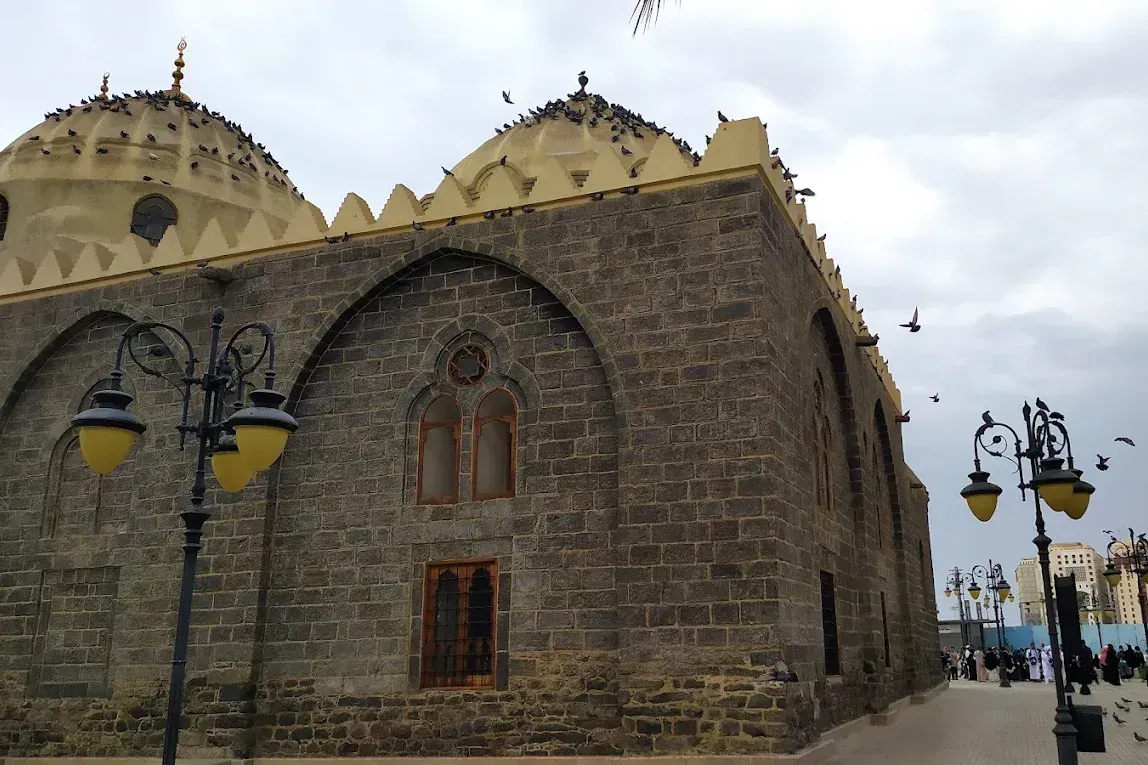
This mosque commemorates the location where Abu Bakr, the first Caliph, led Eid prayers. It was constructed to honor his leadership and dedication to the early Muslim community. Built after his caliphate, it reflects the effort to preserve sacred Islamic heritage. Simple in design, it serves as a powerful symbol of humility and piety. Pilgrims stop here to connect with the spirit of the early caliphs. Its location within Al-Manakha adds to the collective sanctity of the area.
Masjid Ali ibn Abi Talib (RA)
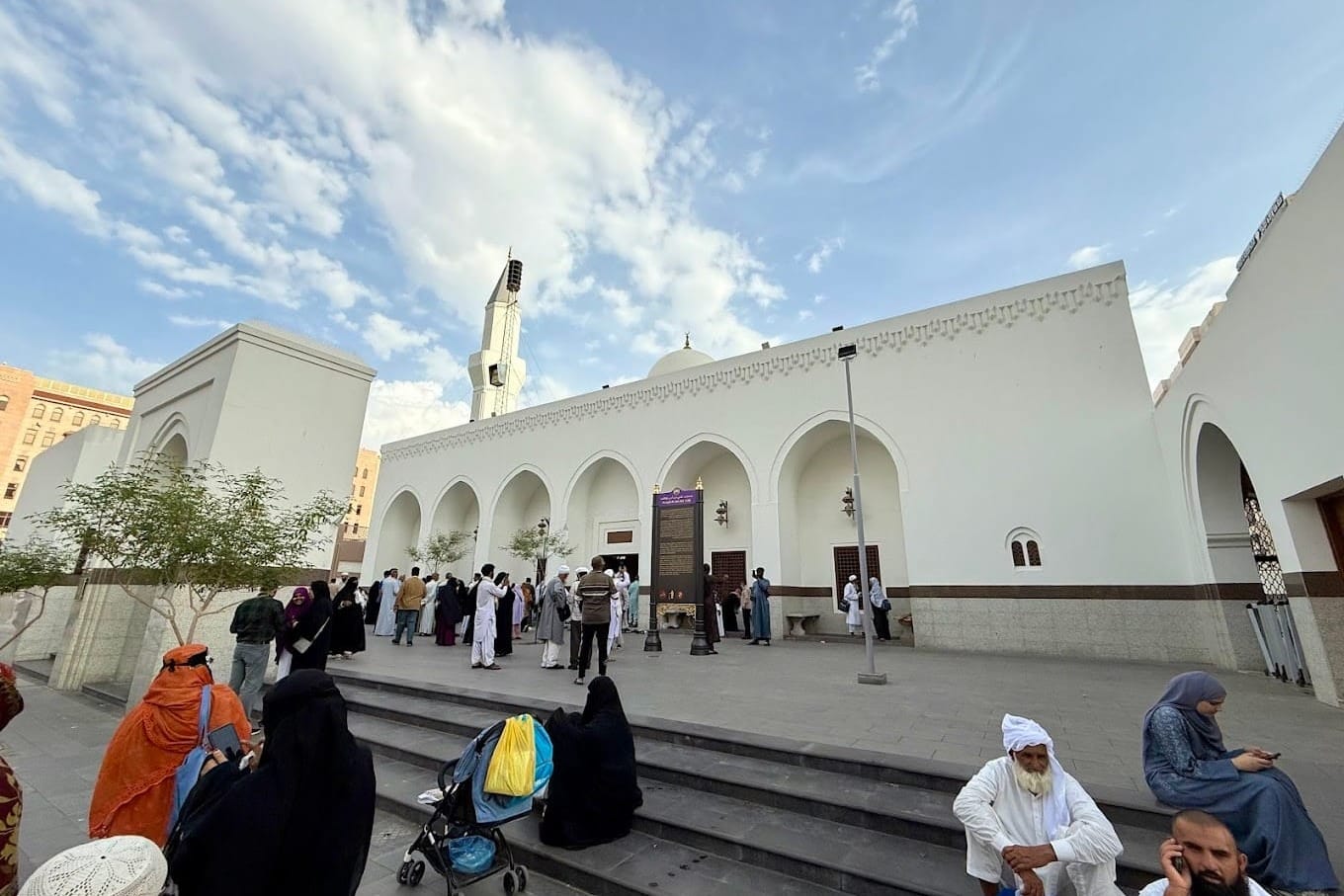
This mosque was built on the site where Ali ibn Abi Talib, the fourth Caliph, led Eid prayers. It stands in honor of his contributions to Islam and his close relationship with the Prophet. Ali’s reputation for justice and wisdom is reflected in the reverence for this site. Like others in Al-Manakha, it was constructed during the Umayyad era to preserve his legacy. The mosque is a peaceful spot, inviting worshippers to remember Ali’s spiritual depth. Together with nearby mosques, it completes the sacred landscape of old Madinah.
Additional Mosques in Al-Manakha
Later centuries saw the construction of more mosques to honor early Islamic figures:
- Masjid Umar ibn al-Khattab (9th century AH)
- Masjid Uthman (15th century AH)
- Masjid Bilal, named after Bilal ibn Rabah, the Prophet’s muezzin
- Masjid al-Qashla, known for its historic military architectural style
These mosques form a sacred constellation within Al-Manakha, linking physical space to profound spiritual heritage.
A Living Cultural and Social Hub
Center of Community Life
For centuries, Al Manakha has been more than a marketplace—it's a gathering point for Madinah’s residents. Historically a site of public announcements, celebrations, and prayers, it remains active, especially during Ramadan, when it comes alive with people breaking fasts and sharing meals.
Culinary and Local Flavor
Surrounding Al Manakha are eateries and vendors serving traditional Saudi dishes. Visitors can enjoy authentic Kabsa, Mandi, or fresh dates while soaking in the sounds and scents of a place that pulses with everyday life and history.
Getting There: Hop-On Hop-Off Bus and Navigation Tips
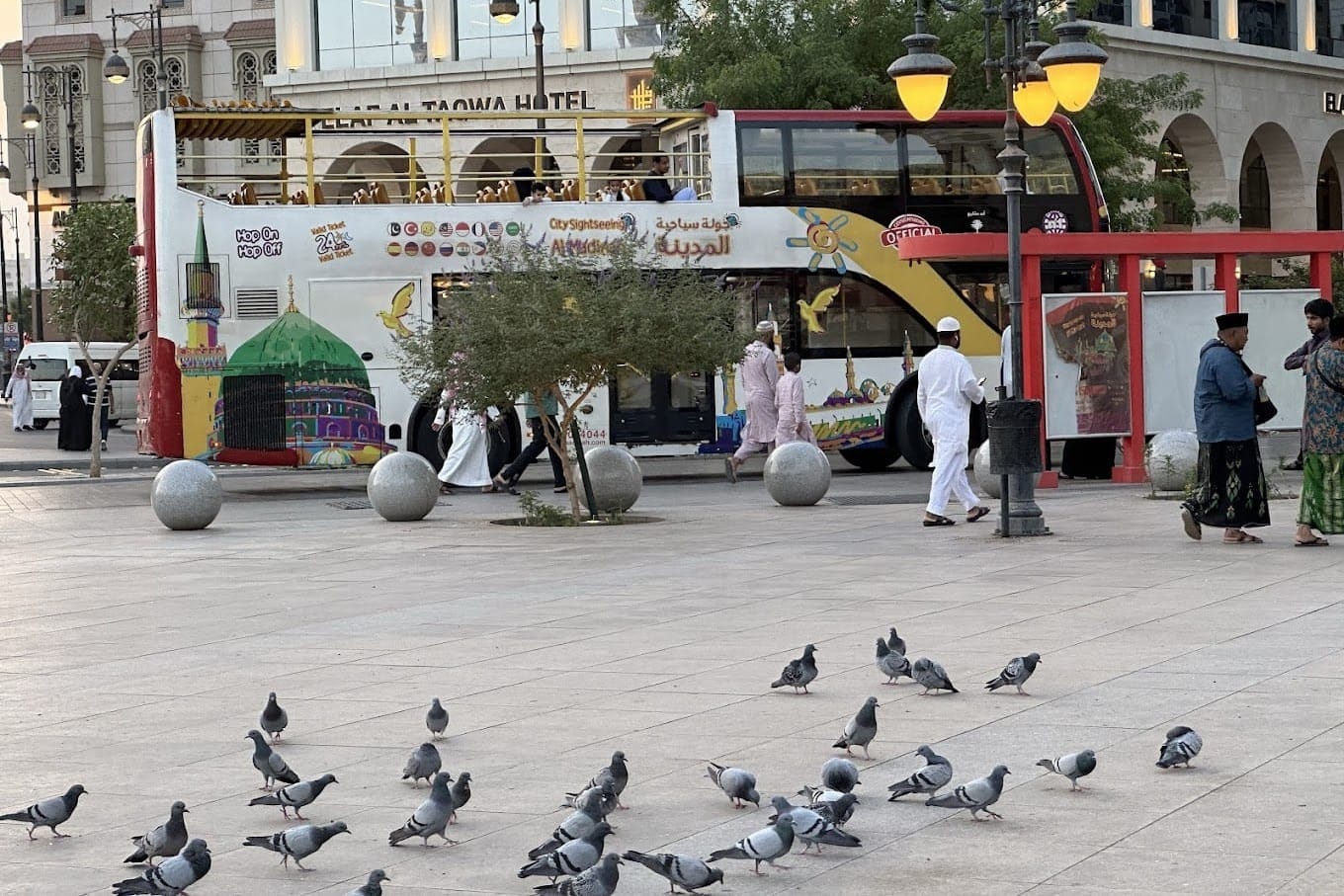
Al Manakha Square is accessible even amid the ongoing development in the southern area of the Prophet’s Mosque. While the Hop-On Hop-Off Madinah bus doesn’t currently stop directly at Manakha Square or Al Baqi, it remains a top choice for city exploration.
Here’s how to visit:
- Hop off at the Al-Salam Stop, the nearest access point to Manakha Square.
- Enjoy a short 5–10 minute walk through vibrant local streets. Use the Prophet’s Mosque as your anchor, and follow signs to “Masjid al-Ghamama.”
- This walk offers a unique look into Old Madinah’s soul—mosques, markets, and friendly faces included.
Souq Al Manakha
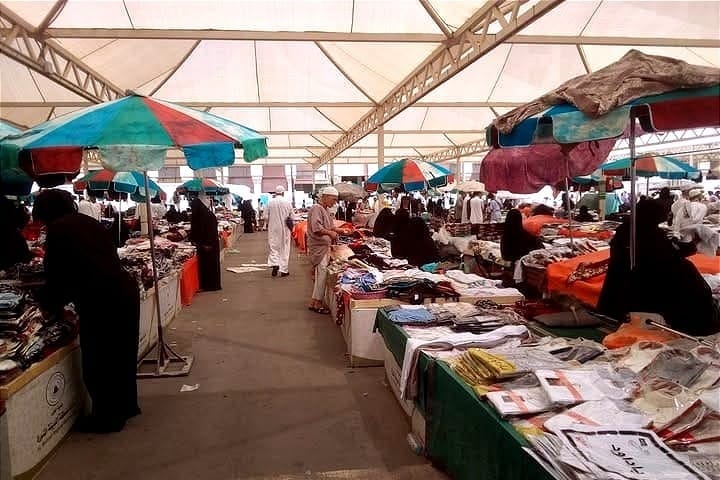
Located within steps of Al Manakha Square, Souq Al Manakha is one of the oldest and most vibrant traditional markets in Madinah. This souq has existed in various forms since the time of the Prophet (ﷺ), when it functioned as a fair and open market space.
Today, it continues that legacy by offering an authentic shopping experience. Visitors can explore stalls brimming with Madinah dates, prayer beads, abayas, thobes, perfumes, and handcrafted souvenirs. The atmosphere is lively, especially during Ramadan and Hajj seasons, with vendors calling out prices and customers haggling in good spirit.
Whether you're seeking spiritual keepsakes or simply want to experience the essence of a traditional Arabian marketplace, Souq Al Manakha delivers charm, history, and variety in one unforgettable stop.
Visitor Tips
- Ideal Visiting Times: Early morning or late afternoon to avoid heat.
- Dress Code: Modest clothing that respects local customs.
- Bring Cash: Some local stalls may not accept cards.
- Use Hop-On Hop-Off Bus: Disembark at Al-Salam Stop, then walk to Manakha Square for a rewarding experience.
The Soul of Old Madinah
Al Manakha Square, or Musalla Square, is not just a historical site—it’s a living legacy of the Prophet’s (ﷺ) life and the early Muslim community. From its origins as a camel rest stop and market to its transformation into a sacred prayer ground and urban heart, Al Manakha offers pilgrims and travelers a rare chance to step directly into Islamic history. Even with minor access detours, it remains one of the most enriching places to visit in Madinah.
Safe travels and may your visit to Al Manakha be truly memorable!

